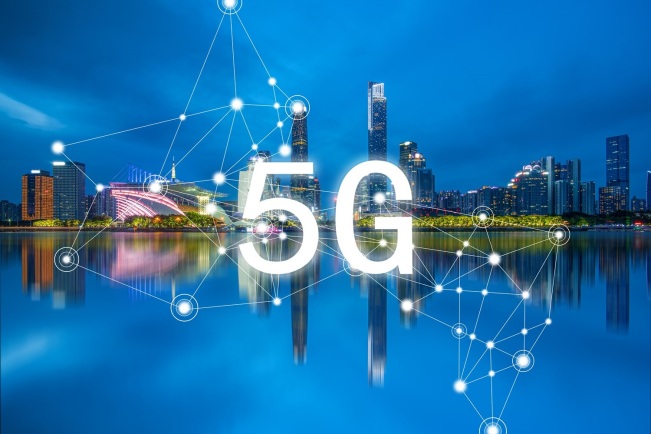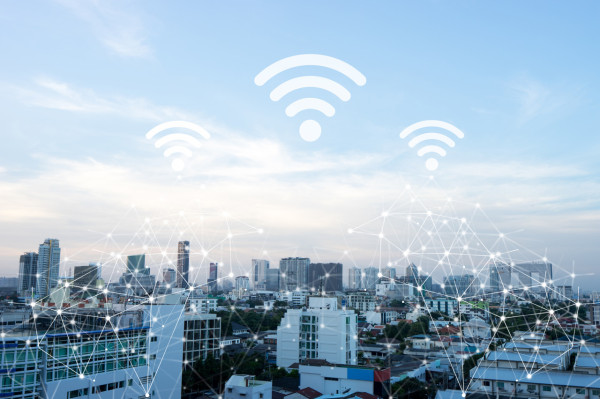LTE vs. 5G: What's the difference?

For years, the hype about 5G seemed never to end, but now most big cities have 5G. It is also being rolled out in towns and rural areas around the world and will soon be as widely used as previous 4G standards.
However, it is still in its infancy, and many of us are still relying on long-term evolution (LTE) technology. LTE is a wireless communication standard that was first introduced in 2009. Like 5G, LTE took years to become part of the nation's interconnected structure. Only a few parts of the UK and other developed countries do not now have LTE operations.
What's more, LTE's reliability and stability have proven to be strong enough to force many to question whether they need to switch to 5G.
What's the difference between 4GLTE and 5G?
Designed by the International Telegraph Union Radiocommunication (ITU-R) regulator, the LTE standard marks a move towards 4G speed. This is partly because most of the infrastructure laid out by telecommunications companies does not meet the thresholds required to be marked as 4G.
In theory, 4GLTE can reach download speeds of up to 150Mbps and upload speeds of up to 50Mbps. These numbers will vary depending on location, deployment, and number of users. Taking these factors into account, they translate roughly into an actual download speed of 20Mbps and an upload speed of 10Mbps.
As a fifth-generation mobile connection, 5G offers theoretical maximum speeds of up to 10Gbps. Even at more realistic speeds, 5G is definitely better than 4GLTE, and we recently tested Vodafone's 5G network with an average download speed of between 100Mbps and 150Mbps.
5G does this by using a different spectrum than 4G, especially in the millimeter wave high band, which supports more bandwidth than the low band used by LTE and therefore can transmit more data.
5G can also use bands below 6GHz but above the low band frequency, but these bands do not support the maximum speed promised by 5G. However, these speeds will still outpace LTE, and the sub-6 can even increase 5G coverage, as millimeter wave frequencies can be hindered by walls and other obstacles.
In short, 5G uses a different spectrum kit than 4GLTE, enabling it to provide better connection speeds, more capacity to handle higher traffic, and delays as low as 1 millisecond.
However, the launch of 5G is still in its early stages. Coverage is still fairly limited, and much remains to be done before networks such as EE, Three and Vodafone begin to deliver on their 5G promises.
Should you choose LTE or 5G?
While the speed of 5G may make you wonder why we compare the two, the answer to this question really depends on your location, budget, and whether you use it for your business or personal needs.
As more countries expand their 5G infrastructure, we're seeing more 5G-enabled hardware options on the market, so you need to investigate the hardware available in your country and whether they fit your needs and price range.
One of the best 5G devices on the market is the Samsung Galaxy S21 Ultra, which, like the Galaxy S20 Ultra, does not offer a 4G version. Retailing at 1,149 pounds, it's definitely the most expensive end, but you can get "new products" on EE with an ultra-energy-efficient 4GB, a plan for 50 pounds a month or a plan for 74 pounds/month, and 100GB at the other end.
One of the most affordable options is the OppoA54, which costs 220 pounds, but offers more storage (only 64GB) and a better macro camera.
Growth in 5G-enabled devices over the past few years has increased competition and started driving down prices, but it may be too early to adopt 5G on LTE. As competition increases, there is no doubt that more attractive services, plans, and storage options will emerge. As 5G coverage expands, you can also connect more consistently to millimeter-wave-based networks for high-speed 5G commitment without interruption.
So, in short, unless you or your business have enough money to burn and don't want to wait for improvements in overall coverage, prices, and packages, it's best to wait and see what the future brings to 5G. With rapid growth and falling prices since 2019, you may not have to wait too long.
However, if you are an enterprise that relies heavily on connected sensors and IoT-like networks, 5G bandwidth and low latency cannot be ignored. 5G has long been touted as a communications technology that will make it easy for driverless cars to navigate, and companies can deploy large networks of smart sensors and devices in innovative ways.
We've seen cameras connected via 5G and 5G to provide 4K resolution salmon video from offshore fish farms for demonstrations of high-fidelity surveillance.
Health problems
Mobile phones have been a cause of health problems, but it's fair to say that not many networks are as notorious as 5G.
In October 2019, Brighton and Hove City Council joined Glastonbury, Froome and Tottennes in banning the installation of new 5G base stations. It is not just the UK that opposes 5G, but part of a larger trend of mistrust (and misinformation). Two years ago, 180 scientists from 36 countries publicly called on the European Union to suspend 5G expansion until a fuller investigation into its impact on human health is conducted.
So what's wrong with 5G?
Both 4G and 5G use "radio waves", but the main difference is that 5G uses more waves than 4G. Higher frequency waves provide better network capacity and speed. However, studies of 5G-related health risks have failed to identify any specific, real 5G risks.
The future of LTE and 5G
As mentioned earlier, the future of 5G lies in its expanded deployment and the introduction of more 5G-enabled devices; Qualcomm said at IFA2019 in Berlin that it would push its 5G modem technology to mid- to low-end chips, paving the way for device manufacturers to integrate 5G connections into affordable hardware.
The potential of 5G to enhance existing technologies and lead more innovative connected systems and potentially socially changing machines, such as self-driving cars, will only grow.
At the same time, LTE will continue to exist and be supported, although over time telecommunications companies are likely to eventually shut down 4GLTE networks, just as the UK is currently phasing out 2G.
Before 6G, 5G was the future of telecommunications. But for most people, this may not be the perfect time to join the 5G trend.